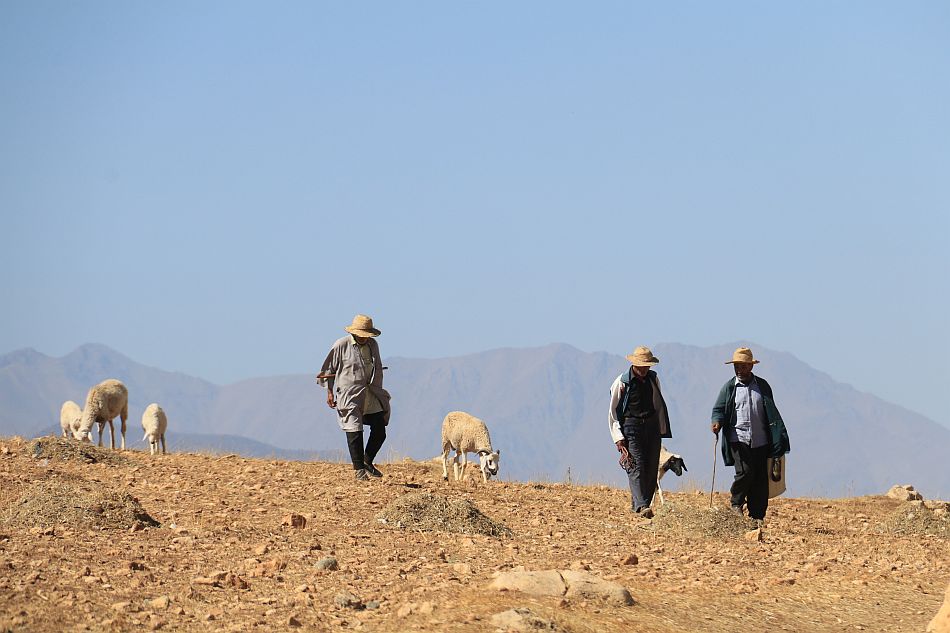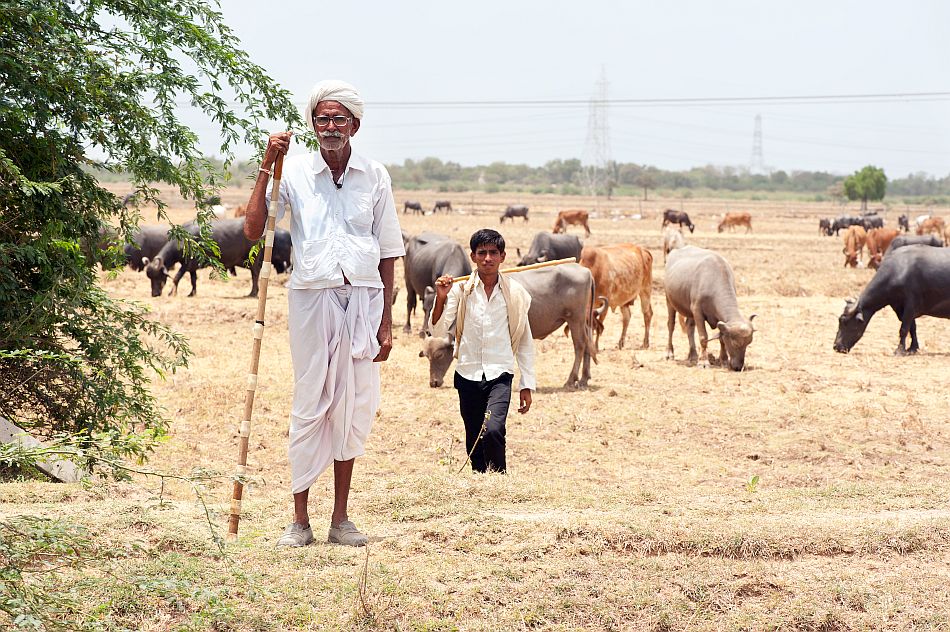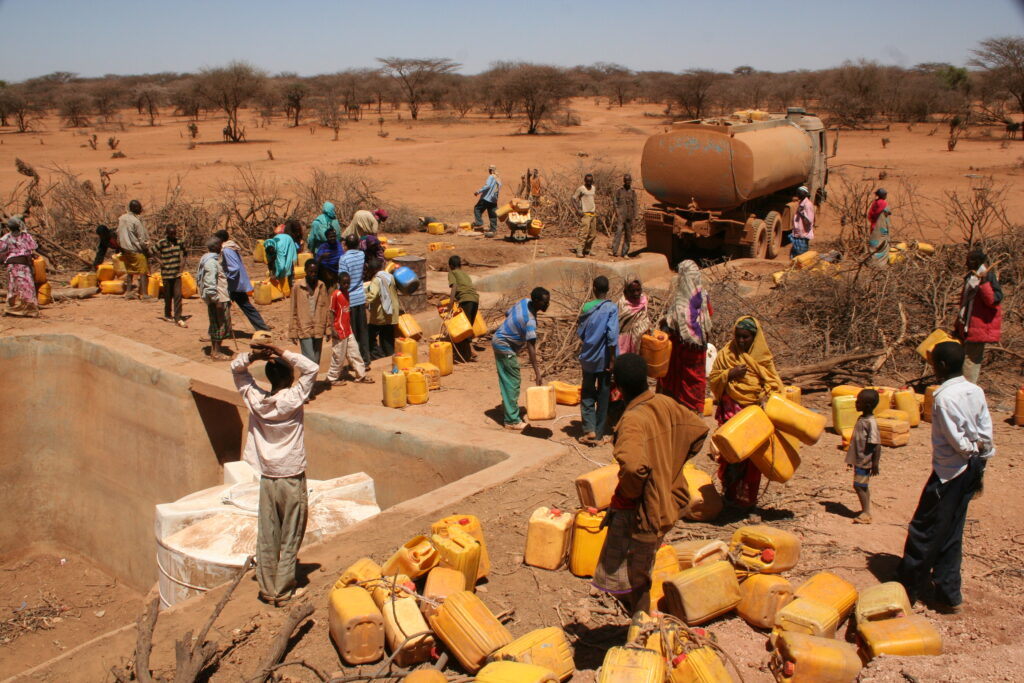Join CGIAR in celebrating the World Day to Combat Desertification and Drought.
This piece was originally published on the CGIAR website.
By Isis Palay, IWMI Consultant
A recent study published in the scientific journal Nature reveals that for the sixth time, a new planetary boundary has been crossed: As a result of human activities, changes to the Earth’s freshwater cycle are now exceeding what scientists consider ‘safe limits.’

Around the world, human activity not only drives land degradation but also accelerates the transformation of drylands — which are home to 3 billion people — into desert. Combined with the intensification of droughts, unsustainable water-intensive agricultural practices, and a variety of other factors, biodiversity, food systems, and environmental health are being threatened as never before. Nevertheless, the agricultural sector has untapped potential to delay the onset of desertification, and even reverse the process in some instances.
To that end, the International Water Management Institute (IWMI), CGIAR, and its many Research Centers are working to scale up the deployment of water-smart agricultural solutions to slow the march of land degradation and desertification, and enhance the resilience of vulnerable populations to droughts.
Why desertification matters, and how drought prevention can slow its progress
For decades, disturbances to the planet’s water cycle have had dramatic consequences, including the acceleration of desertification. While desertification occurs in many regions of the world, its impacts on food security and biodiversity health are felt most acutely in Africa and Asia, with almost half of the African continent and 38 out of 48 Asian countries today threatened by desertification. In total, 500 million people live within areas that have been desertified since the 1980s.
Fortunately, we have the tools and know-how needed to help slow or reverse these trends — if we allow science-based land- and water-use practices and policies to guide us. To find the most effective solutions, a nuanced understanding of desertification’s sometimes interlinked root causes is crucial. In drought-prone areas such as the African Sahel, for example, overcropping can lead to the depletion of nutrients in the soil, and eventually foster conditions favorable for desertification.
How then might agricultural producers stay one step ahead of the next drought? To sustainably strengthen food security in Eastern and Southern Africa, CGIAR’s new Ukama Ustawi Initiative is promoting crop diversification and sustainable intensification, enhanced delivery of digital agro-advisories and early warning system tools, and enterprise development as means to increase local agricultural resilience to climate change (in Shona, ‘ukama’ means humanity’s relatedness to each other, in Swahili, ‘ustawi’ means ‘well-being’). IWMI and other CGIAR researchers are predicting that combining innovative risk-management strategies with intensified agricultural production will encourage the uptake of climate-smart water practices.
Rising up from droughts together
In Africa and beyond, an ever-greater number of countries are investing in efforts to prevent losses caused by droughts and other extreme weather events. The attention is warranted, as droughts affect over 55 million people every year. With the help of digital maps like IWMI’s award-winning South Asia Drought Monitoring System (SADMS), the Institute’s researchers have been able to support local policymakers and actors in developing and implementing diverse, scalable strategies to effectively cope with water shortages.
In the Middle East and North Africa, IWMI’s USAID-funded MENAdrought project is helping Tunisia, Morocco, Lebanon, and Jordan more effectively cope with drought. The project’s most powerful tool is an interactive map that compiles satellite data on rainfall, vegetation health, land surface temperature, and soil moisture to monitor the presence and extent of droughts. This map not only allows local communities to anticipate and quickly respond to droughts, but also provides guidance for decision-makers to design evidence-based policies for long-term climate adaptation and resilience.
Early warning systems like the MENAdrought tool have also become the basis for disaster risk reduction initiatives whose lessons are being shared across borders. For example, farmers are often among the first to feel drought’s impact on their livelihood. To help them protect their crops against extreme weather events in India and Sri Lanka, IWMI researchers — with support from CGIAR’s Research Programs on Climate Change, Agriculture and Food Security (CCAFS) and Water, Land and Ecosystems (WLE), as well as from the Indian Council of Agricultural Research (ICAR) and seed and insurance partners — promoted an innovative solution known as “Bundled Solutions of Index Insurance with Climate Information and Seed Systems to Manage Agricultural Risks” (BICSA). The project offers farmers the option to take out insurance to protect themselves from the impact of droughts, floods, or heat waves. With the insurance, farmers are compensated in case of a major flood or drought. This peace of mind incentivizes them to invest both in more resilient agricultural practices and in better seeds which produce higher yields, even in the case of a mild drought.

Mapping out the road ahead
Although no two countries face identical climate risks in the early 21st century, the models and compendiums of best practices produced by IWMI and CGIAR Research Centers are applicable beyond the regions where they were first implemented. Going forward, efforts to tackle desertification, more effectively navigate droughts, and bolster disaster preparedness must remain centered on sound science and be driven forward by partnerships, transparent information-sharing, and robust collaboration between the public and private sectors. We invite you to visit us online to learn more about CGIAR’s new Portfolio of Initiatives to strengthen water security, improve land-use sustainability, and enhance food production the world over.















